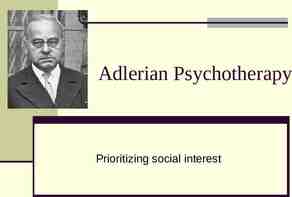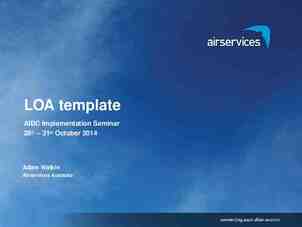Implementing HUD’s Equal Access and Gender Identity Rules August
41 Slides3.77 MB

Implementing HUD's Equal Access and Gender Identity Rules August 30, 2017

Discussion Today Please turn cell phones off if not on-call, and put them away. Close email and other programs. This presentation will last about 60 minutes with question breaks. To submit questions use the chat box at the bottom of the GoToMeeting window.

Agenda 1.Discuss Equal Access Rule 2.Review Gender Identity, Gender Expression, Sexual Orientation 3.Discuss Specific Scenarios at Projects 4.Review Resources to Help Going Forward

HUD’s Equal Access and Gender Identity Rules In effect October 21, 2016 Equal access is provided in all HUD assisted programs Individuals are placed in accordance with gender identity No requirements for individuals to “prove” gender identity Providers must update policies and procedures to reflect requirements

Equal Access Rule (published in 2012) Ensures that lesbian, gay, bisexual, and transgender people are guaranteed equal access to HUD’s housing and shelters. Clarifies the term "family" and "family unit", as used in the HUD programs (see https://www.hudexchange.info/faqs/1529/how-is-the-definitionof-familythat-was-included/ )

Requirements of Gender Identity Rule Published on September 21, 2016. Effective on October 21, 2016 Requires that policies and procedures to protect privacy, health, safety, and security, shall be established or amended, as necessary, and administered in a nondiscriminatory manner to ensure that: Equal access to all CPD programs is provided in accordance with gender identity; In single-sex facilities, individuals are placed, served and accommodated in accordance with one’s gender identity; and Individuals are not subjected to intrusive questioning or asked to provide anatomical information or documentary, physical, or medical evidence of the individual’s gender identity. Plus non-discriminatory steps must be taken to address privacy concerns, including updating operating policies and procedures.

Is my project required to comply with the Equal Access Rule? Yes. All HUD programs, from sheltering to mortgage programs must comply with the Equal Access Rule. This includes all Community Planning and Development Programs: CDBG HOPWA HOME Housing Trust Fund CoC Rural Housing ESG

Department of Justice’s Office of Civil Rights: FAQs on the Nondiscrimination Grant Condition in the Violence Against Women Reauthorization Act of 2013: Issued April 9, 2014 VAWA 2013 imposes a new grant condition that prohibits discrimination on the basis of sexual orientation and gender identity by recipients of such grants. The FAQ also addresses how a recipient of DOJ funds can operate a single-sex facility funded through VAWA and not discriminate on the basis of gender identity. FAQs can be found at http://www.justice.gov/sites/default/files/ovw/legacy/2014/0 6/20/faqs-ngcvawa.pdf

Questions?

Language: Using Appropriate Terms Gender Identity: Internal or innate sense of being male, female, or another gender May or may not match their assigned sex at birth Gender Expression: External expression of gender identity (note that many times people do not feel they can safely express their gender identity) Exhibited through: behavior, clothing, hairstyle, body language, and voice Sexual Orientation: Physical or emotional attraction to the same and/or opposite sex Distinct from one’s gender expression or identity

Language: Using Appropriate Terms Transgender: Umbrella term for people whose gender identity is different from their assigned sex Occasionally, an individual may determine they no longer identify as transgender after they transition. Transitioning (Gender Transition): Process that some (but not all) transgender people go through to begin living as the gender with which they identify, rather than the sex assigned to them at birth. Transitioning does not require medical treatment.

LGBT 101

Experience Poll: Are These Terms New to You? Have you used this language in your project/setting? a)Yes, these are very familiar terms that I use regularly; b)Yes, these are terms I’ve heard before but don’t use regularly; c)No, these are new terms.

You may also consider reviewing this resource link for more information: Understanding Transgender People- The Basics http://www.transequality.org/sites/default/files/docs/resources/Un derstanding-Trans-Short-July-2016 0.pdf

Scenario #1: Sleeping Arrangements I run a 50 bed emergency shelter for men. My project is housed in an old firehouse and only has congregate sleeping and bathroom facilities with no privacy for any clients. One of the men staying in the shelter comes to a volunteer staff person and identifies as transgender. Do I allow them to continue using the same facilities as other clients?

Scenario #1: Sleeping Arrangements 1. Not only can you allow it, but are required to do so. 2. Do not isolate clients based on their transgender status. 3. A client may request an accommodation (in this case perhaps requesting a bed assignment near the staff workstation or access to space set aside for highly vulnerable clients) however, staff may not impose or require a client accept an accommodation. 4. Treat all clients that are eligible, in this case anyone identifying as male, with the same services, staff, questions, and setting that all other clients receive.

Scenario #2: Domestic Violence Shelter I run a domestic violence project that serves women. We house residents in two separate buildings on the same property. All residents have access to the same services but I’ve decided to house transwomen in one building and women in the other. I did this because I’m worried about triggering traumatic experiences for residents of the project as they begin to rebuild their lives. Can I require all transwomen be served in a different building or project?

To address this question, let’s consider: Trans clients are also highly vulnerable. We cannot control what triggers people. Operating a Federally funded project in a discriminatory way is not a sustainable model. Intimate partner and family violence projects already know that aggressors and victims can be of any age or gender. Perpetrators can be adult children being violent with parents, same-sex partners using violence, or any combination of the diversity in a community. Federally funded projects that are designed to serve women who are victims of domestic violence must serve all women. If a project serves families that are victims of domestic violence, then they must serve all families.

It is Important to: Regularly educate staff, volunteers and residents about respect and equal treatment of LGBT individuals Take violence against LGBT residents seriously Document the violation and respond immediately Enforce non-discrimination rules consistently to establish safe space for LGBT residents Immediately investigate allegations of violence or harassment of LGBT individuals in the shelter, identify the perpetrator(s) and enforce the shelter’s nondiscrimination rules

Why are LGBT Protections Necessary? Among homeless LGBT youth (up to age 24), the average age of being homeless the first time is 15 years old. Nearly two thirds of homeless shelters in a study failed to enroll a person properly once they identified as transgender. Nearly a quarter of homeless transgender residents report being assaulted by other residents or staff at homeless shelters.

Meet George .

What Discrimination Looks Like: Emergency Shelters A shelter employee hanging up immediately after caller reveals she is transgender. A shelter employee making references to genitalia or to surgery as requirements for appropriate housing. A shelter employee refusing to enroll a participant “because they would make other participants uncomfortable or feel unsafe.”

What Discrimination Looks Like: TH, PSH, Other Housing Management of housing projects or facilities failing to address complaints from LGBT individuals regarding harassment by other residents. Project staff revealing an individual’s status as transgender and requiring special procedures for households with a transgender person. Project staff excluding individuals based on family composition. The Equal Access Rule clearly defines “family” at 24 CFR 5.403, and the CoC Program Interim Rule at 24 CFR 578.93(e) and the ESG Program Interim Rule at 24 CFR 576.102(b) prohibit involuntary family separation.

Experience Poll a) None of these issues have come up in my project/community; b) These are issues that have come up but are not managed well; c) These are issues that have come up and are managed in accord with the Equal Access Rule.

Scenario #3: Non-Binary Identity At my women’s shelter, where everyone sleeps in a room with 3 roommates, a person is referred to the project by an outreach worker. We don’t have any extra space to house trans clients. When they arrive, the individual refuses to pick male or female and says they don’t identify with either. What should I do?

Scenario #3: Non-Binary Identity a) Ask the client, “We serve women at this project, do you feel your gender identity more closely aligns with the housing and services we offer?” If so, enroll the client. b) HUD does not require project participants to select male or female. c) “Extra” space isn’t necessary to serve transgender or nonbinary clients seeking services.

Questions? For more information, please review: Understanding Non-Binary People- How to be Respectful and Suppo rtive http://www.transequality.org/sites/default/files/docs/resources/U nderstanding-Non-Binary-July-2016 1.pdf

Creating Safe Space in your Facility People will ask the following when walking into your space: Is this a place where I can be myself, or will I have to hide who I am? Is this a place where I will experience violence from people around me – employees, volunteers, or other residents? Will the people who work here understand what I need? Am I safe enough here to stay off the streets tonight?

Safe Spaces: Showers and Bathrooms Access is based on gender identity Increase privacy, when possible, by: Installing temporary or permanent curtains Installing locks, doors or partitions to toilet stalls Single-use facilities are gender neutral, meaning anyone can use them Increase privacy through staggered shower times for those who request more privacy

Safe Spaces: Conflict Resolution Don’t target the more cooperative harassed individual to make changes. Focus on the aggressor. Staff training should incorporate multiple ways to address and resolve impermissible conduct among residents Conflict resolution should not involve expulsion of the victim of harassment

Safe Spaces: Making Room for All Families When projects serve ANY families with children, they must serve ALL families with children. That includes families of any composition type: single dad, single mom, same-sex couples, opposite-sex couples, multigenerational, and non-romantic groups who present for services as a family For more information, visit https://www.hudexchange.info/faqs/1529/how-is-thedefini tion-of-family-that-was-included/

Safe Spaces: Non-Binary Clients in Single-sex Facilities Some clients may not identify themselves as either male or female BUT Most shelters assign housing and programming based on two genders only: male and female How should project staff resolve? Explain that the shelter’s decisions are based on two genders only Ask the client to choose the gender with which they most closely identify Make decisions for placement that are appropriate to the gender selected by the individual.

Next Steps Does your agency have an anti-discrimination policy? Is it posted publicly? Get a notice of rights at: https://www.hudexchange.info/resources/documents/Noticeon-Equal-Access-Rights.pdf LBGT Equal Access to HUD Programs Flyer https://portal.hud.gov/hudportal/documents/huddoc?id lgbtfl yer.pdf Do we regularly train staff and volunteers on the policy and how to implement? Take a look at the Equal Access Self Assessment tool on the HUD Exchange: https://www.hudexchange.info/homelessness-assistance/re sources-for-lgbt-homelessness/#self-assessment-forshelters-and-projects

Next Steps Ask for help, reach out to local LGBTQ advocacy organizations: The Source LGBT Center PFLAG Tulare and Kings Counties Visalia Pride Lions Club

Next Steps Find statewide LGBTQ advocacy organizations at: http://www.equalityfederation.org/members/list/ Find state and local fair housing enforcement agencies at: http://www.civilrights.org/fairhousing/laws/stateagencies.html?referrer https://www.google.com/ Visit HUD Exchange LGBT Homelessness Resource Page: https://www.hudexchange.info/homelessness-assistance/ resources-for-lgbt-homelessness/

Next Steps: Where Can I File a Complaint? The Fair Housing Act also prohibits discrimination based on gender identity, and on sexual orientation where the evidence establishes discrimination is based on sex stereotyping. File complaints at: http://portal.hud.gov/hudportal/HUD?src /topics/housing discrimination Or call (800) 669-9777

Employment Regulations

United States Equal Employment Opportunity Commission (EEOC) EEOC established the following employer liability for harassment: The employer is automatically liable for harassment by a supervisor that results in a negative employment action such as termination, failure to promote or hire, and loss of wages. If the supervisor’s harassment results in a hostile work environment, the employer can avoid liability only if it can prove that: 1) it reasonably tried to prevent and promptly correct the harassing behavior; 2) the employee unreasonably failed to take advantage of any preventive or corrective opportunities provided by the employer. The employer will be liable for harassment by non-supervisory employees or non-employees over whom it has control (e.g. independent contractors or customers on the premises), if it knew or should have known about the harassment and failed to take prompt and appropriate corrective action.

United States Equal Employment Opportunity Commission (EEOC) EEOC harassment standards: The United States Equal Employment Opportunity Commission (EEOC) has established guidelines for employers regarding behaviors that create a hostile work environment and require correction. It is important to remember that homeless projects are also workplaces. As defined by the EEOC, harassment can include: Offensive jokes, slurs, or epithets or name-calling Physical assaults or threats Intimidation, ridicule, or mockery, insults or put-downs Offensive objects or pictures Interference with work performance

Questions

HUD Resources Equal Access in Accordance with Gender Identity Final Rule 2016 https://www.hudexchange.info/resources/documents/EqualAccess-Final-Rule-2016.pdf Technical Assistance materials to support final rule implementation https://www.hudexchange.info/homelessnessassistance/resources-for-lgbt-homelessness/. HUD has also provided a document that grantees can publicly post to inform clients and staff of the equal access requirements, which can be found at https://www.hudexchange.info/resource/5147/notice-onequal-access-rights/. http://portal.hud.gov/hudportal/HUD?src /LGBT resources.






